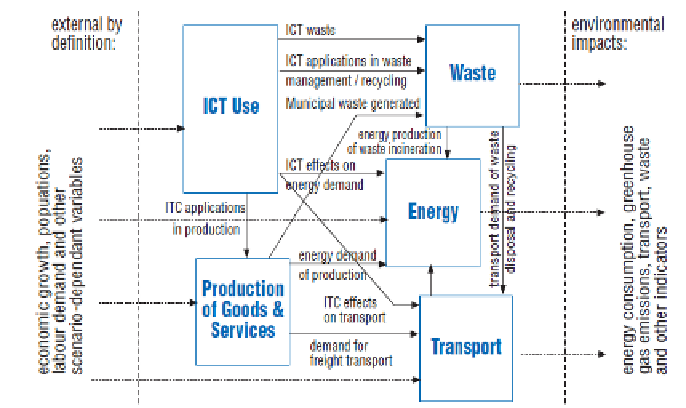Information Technology Reference
In-Depth Information
paradigms including cloud computing. Virtualisation is only one technology behind
cloud computing development and new technologies might be even more beneficial
for energy savings, reducing greenhouse emissions and related issues.
2
The Landscape of Green Utility ICT
2.1
Assessment of the Impacts of ICT on the Environment
A comprehensive review of the state-of-the art until 2007 of the impacts of electronic
business and generally ICT on the environment has been provided by Yi and Thomas
(2007) [7]. This review article presents the contents of various journal papers
and thesis as well as other resources such as projects and associated reports,
conference and symposia, and websites with the main aim of examining and capturing
the most important approaches to date, either for a general knowledge of the area of
the environmental impact and issue of extensive use of ICT. This background study
could be used by experts carrying out future research and defining the directions of
ICT as a utility matching the green computing requirements. This review highlighted
that the dominant approach is either a micro-level case study or a macro-level
statistical method and it is concluded that a more predictive and empirical model,
which can be applied within different sectors should be more beneficial in the long
term. Evaluations of the impacts of ICT on the environment have been made by
different organisations including European Commission (EC) together with Joint
Research Centre (JRC) [8] that have reported the future impacts of ICT on
environmental sustainability. A complex system representing a set of implications of
the application/use of ICT has been identified and it is presented in figure 1 that also
has identified the systems boundaries.
Fig. 1.
Complexity and relationships of the Environmental Impacts of using ICT to different
sectors [8]

